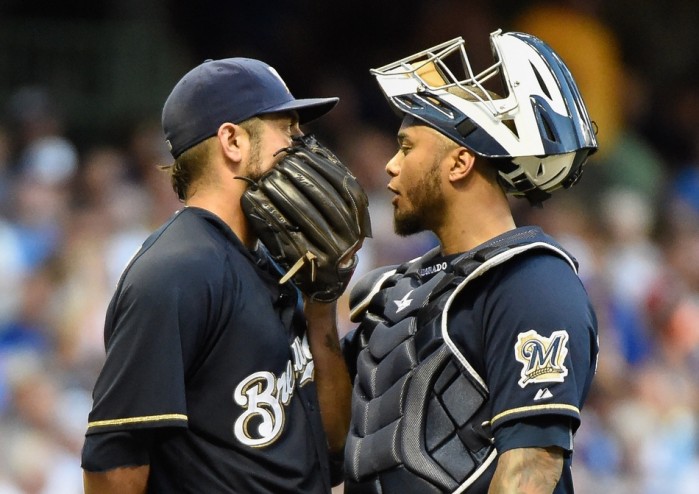When Milwaukee signed Kyle Lohse before the 2013 season, they were hoping he would be a solid, middle-of-the-rotation starter for a playoff contender. When they signed Matt Garza before the 2014 season, they were hoping for a second or third starter on a competitive team. And even prior to the 2015 season, after the shocking run at the playoffs in 2014, the Brewers’ front office would have been hoping for the best.
By about May, though, when it became clear that the Brewers were not going to challenge St. Louis or Pittsburgh for the division title, the organization would have hoped that Lohse and Garza could still provide value for a club now trying to nurture a group of young starting pitchers.
Unfortunately, this did not work as planned. The two veterans threw the second- and third-most innings on the team, and they were two of the worst pitchers in baseball. Lohse and Garza finished ninth and fourteenth, respectively, in DRA- amongst all pitchers with at least 100 innings.
One could reasonably argue that because the team had no hope of competing, it didn’t really matter how good (or not) Lohse and Garza were. Of course, though, part of the reason the team had no hope to win was how amazingly terrible their rotation was.
The poor on-field performances of their two veteran pitchers could have been forgiven if they were able to serve as mentors or role models. And while it is basically impossible for an outsider to judge clubhouse or personal impact without being around the team every day, it seems difficult to imagine what lessons those two could have imparted while pitching so poorly they were each demoted. Lohse was sent to the bullpen in August, while Garza was shelved for the season at the beginning of September.
Garza is under contract for 2016, but Lohse is a free agent and unlikely to return given his poor performances and the need for Milwaukee to fit young starters into the rotation. This, however, will leave Garza as the only starting pitcher over the age of 27 on the roster—at least as it is currently constructed.
Teams have spent decades signing veterans to help mentor their younger players. These moves are often criticized as teams wasting a roster spot on someone who will not provide any on-field value, but they can be important when managed correctly. Experienced pitchers can teach younger pitchers how to maximize the usefulness of their off days or how to adjust their grips when something isn’t working right. Lohse and Garza have each certainly been in the majors long enough to fill that role.
The question will then be whether Garza as the lone veteran presence in the rotation is sufficient. With three promising youngsters who the team will want to give as many chances as possible to, it’s unlikely that the front office will sign any starting pitchers who would be guaranteed innings. Instead, they will want to give Jungmann, Nelson, and Peralta every chance to succeed.
Personally, I would expect that the three young starters will have outgrown the need for a true mentor. Each has now been in the major leagues for at least the majority of a big-league season (Peralta threw full seasons in 2013 and 2014 as well) and will know how to manage such intricacies as the big league per diem and road trips in chartered planes. While they each can obviously improve on the mound—and will hopefully continue to do so—their next big mental hurdle will probably be pitching in meaningful postseason battle, and they will simply need better teammates to be able to do that.
